Chinese five spice powder uses ranging from using this unique spice blend as a dry rub for meat (usually pork) to vegetables and even dessert!
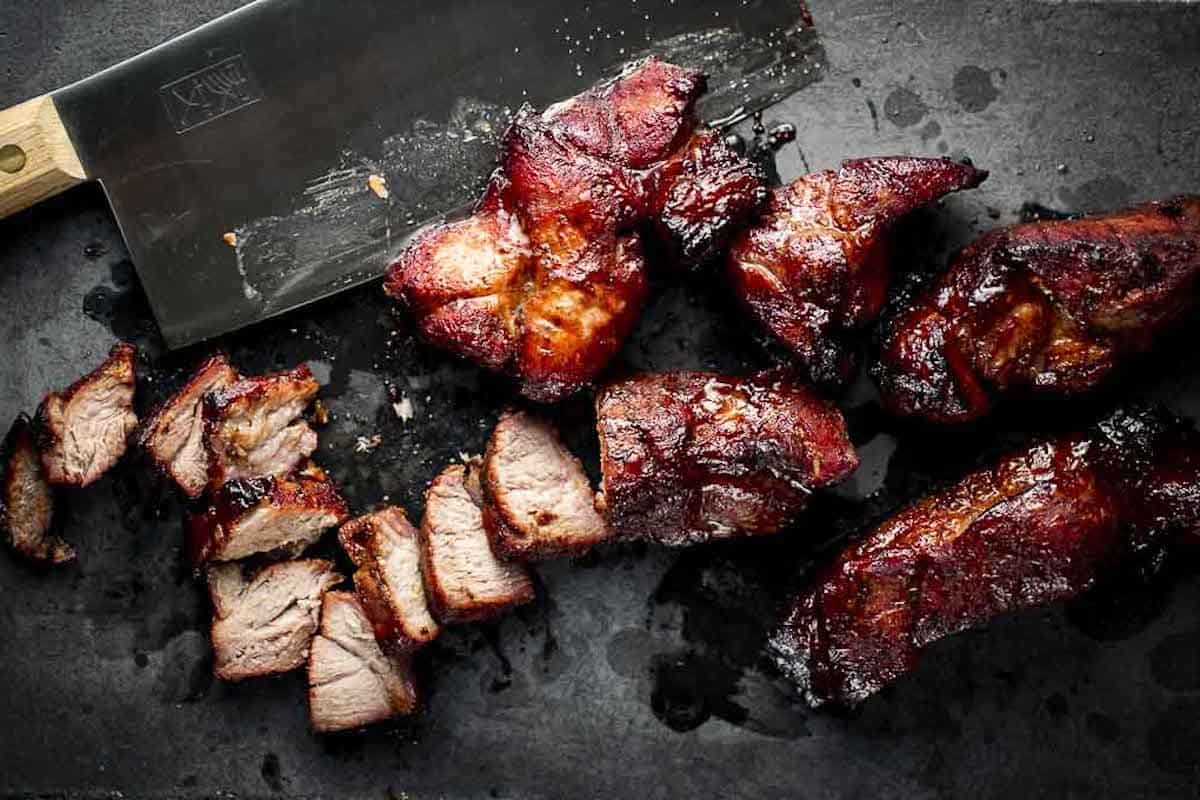
Jump to:
Since I just shared a recipe for a homemade 5 spice powder home blend, and a tau yew bak recipe (5 spice powder braised pork), it seems natural to follow up with a post on how to actually use 5 spice powder, a common ingredient in Chinese recipes.
After all, it's not 1 of the most commonly used spices in the kitchen, unless you eat a lot of Chinese food. So you may need some inspiration! 🙂
What is Chinese 5 Spice?
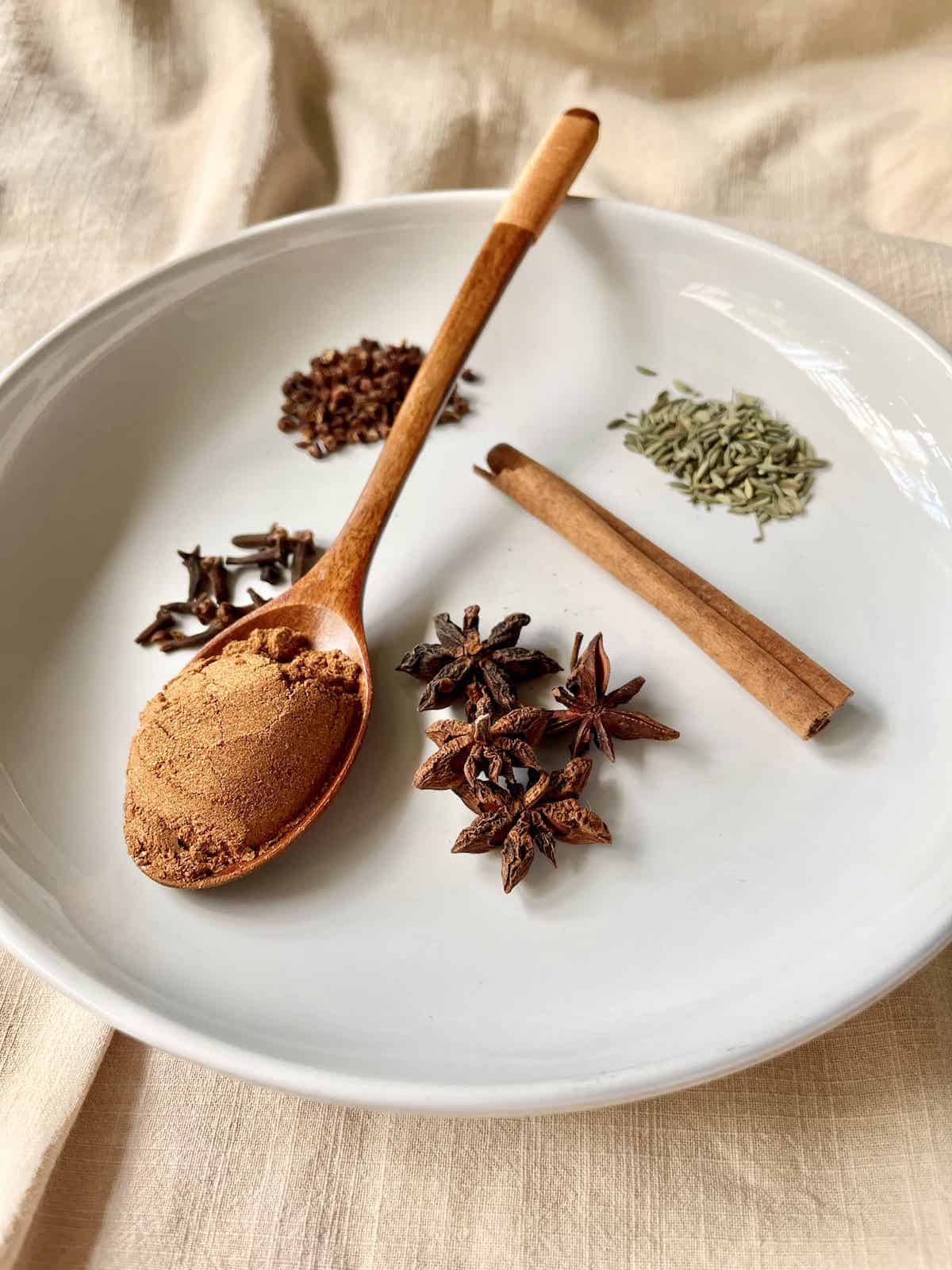
Chinese five-spice powder is a fine powder ground from a number of spices. It is used in almost all branches of Chinese cuisine, particularly in Southern China. However, it is also found in Vietnamese and Hawaiian food.
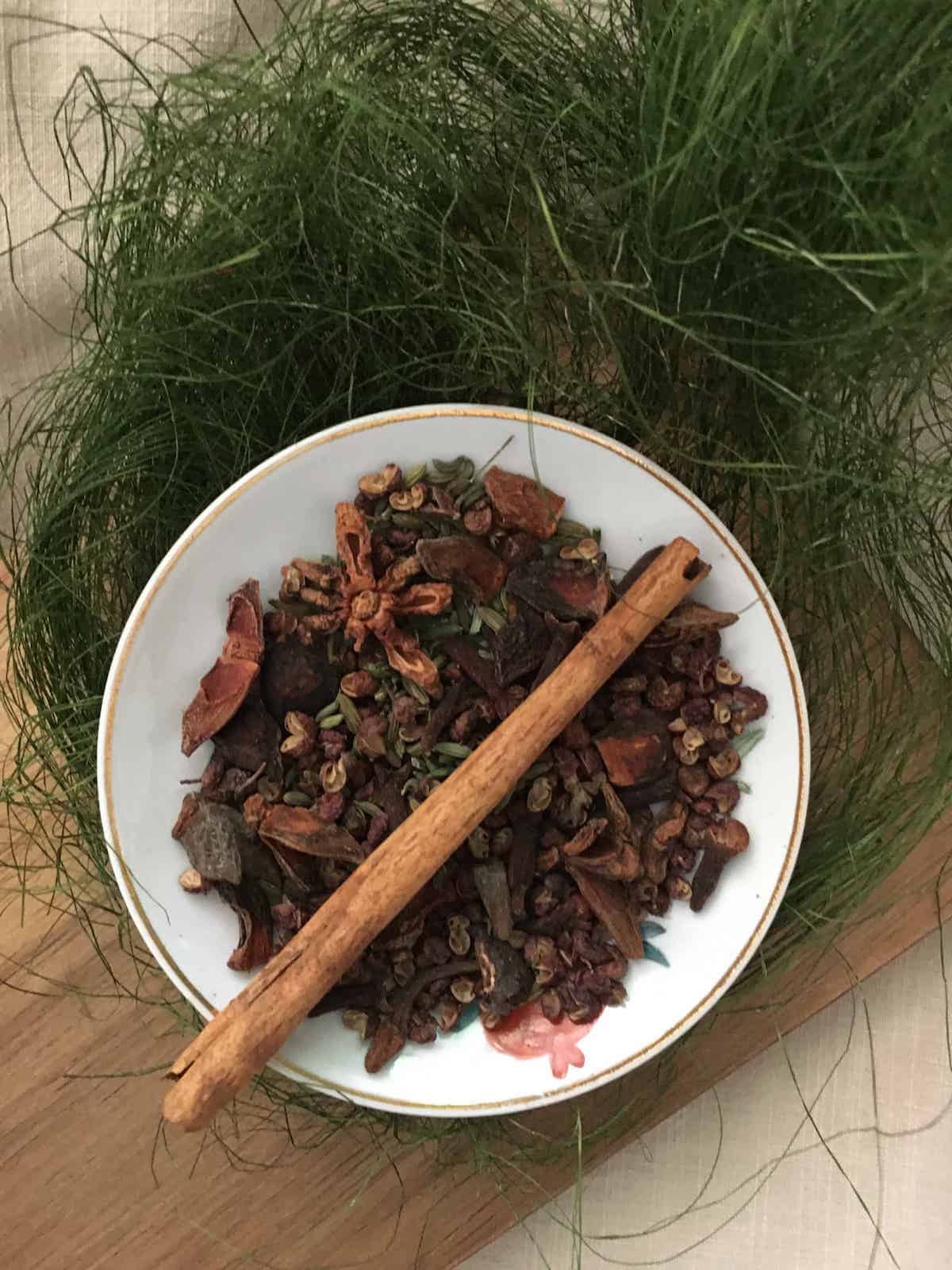
The "5" in "5-spice" actually refers to the 5 Chinese traditional food elements- sweet, bitter, sour, salty, and umami (savoriness)- not the number of spices in the powder. Hence, some 5-spice blends actually have more than 5 spices in them!
In fact, there is even a less-common 13-spice powder in Chinese cooking.
I guess you could say it's a bit like the Asian equivalent of all-spice?
Asian Meat Recipes
Chinese Roast Chicken
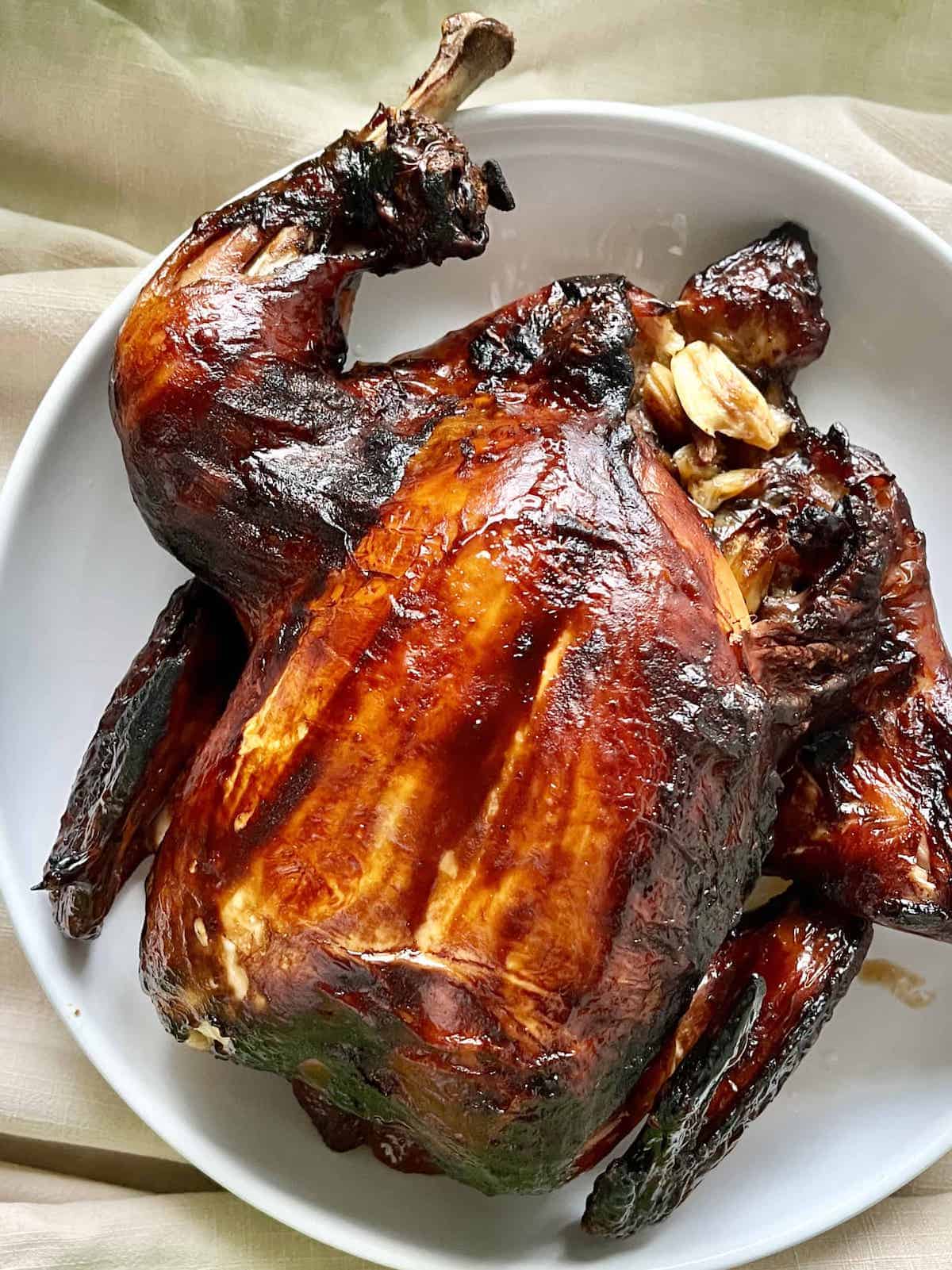
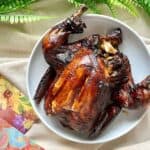
Taiwanese Rou Zao Fan
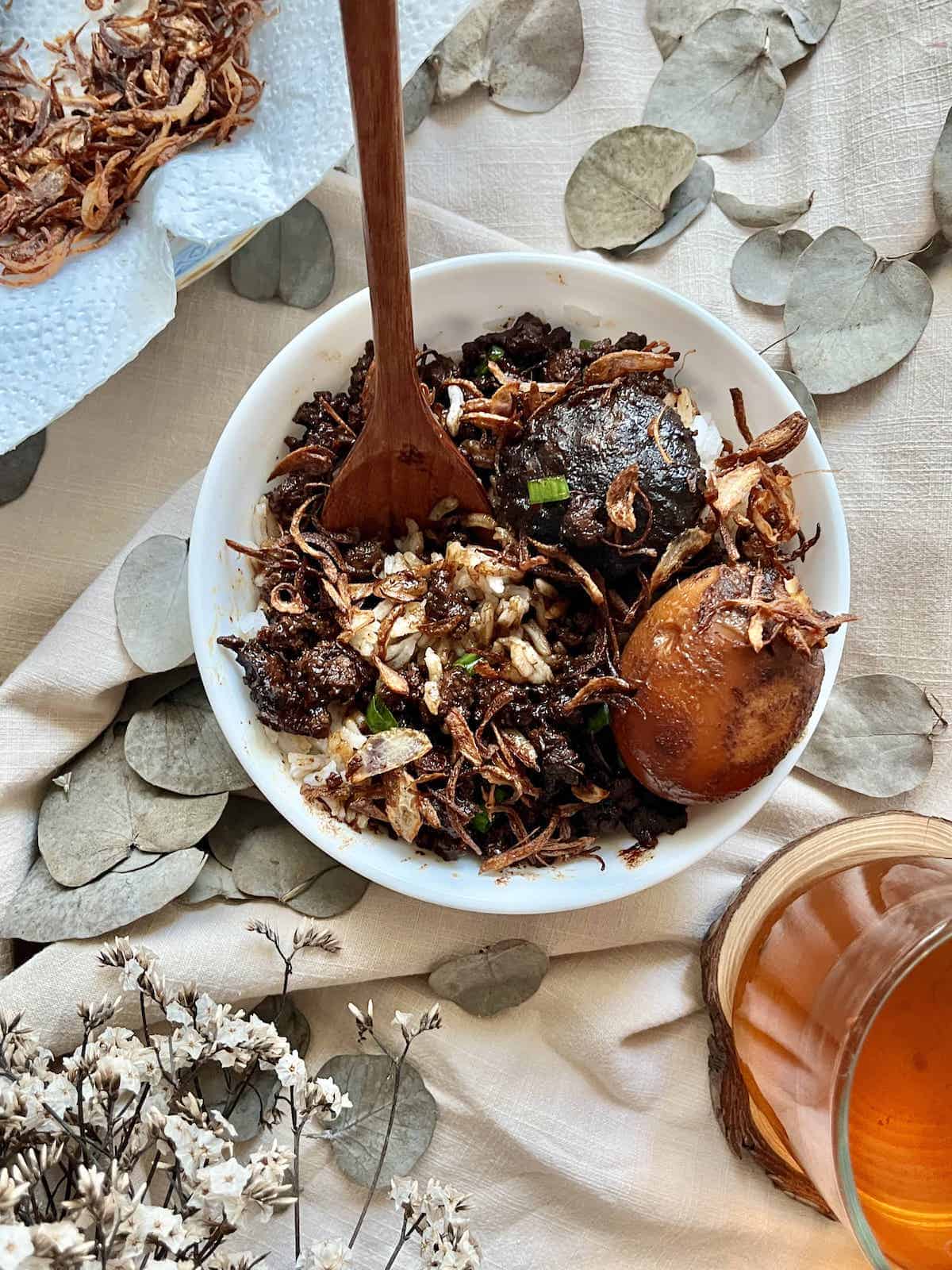
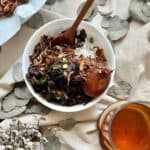
Bak Kwa
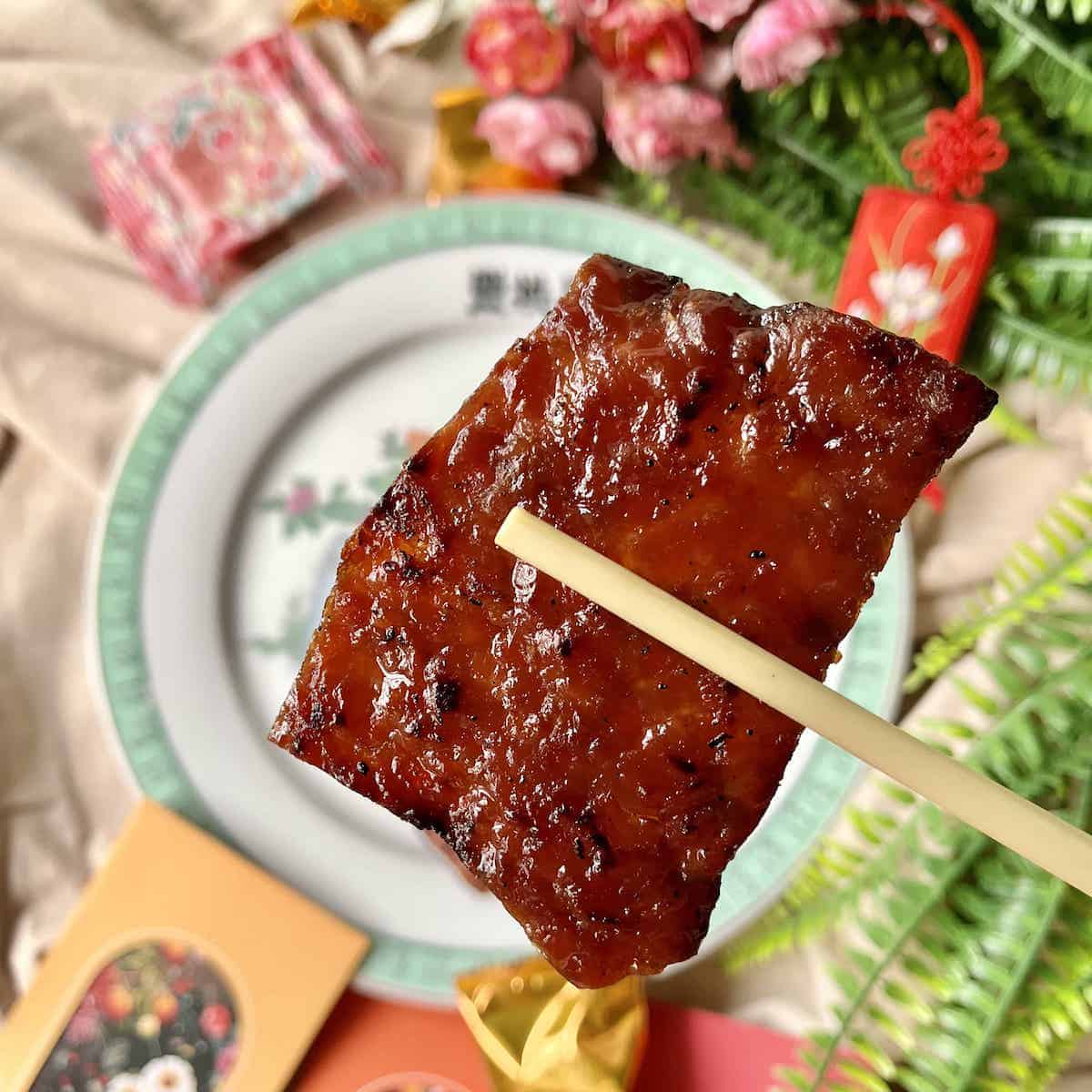
5 spice powder is often used in Asian meat dishes, such as bak kwa (a pork jerky that is especially popular during Chinese New Year.)
Tip: If you end up buying or making too much of it, here are some ways to use up leftover bak kwa jerky.)
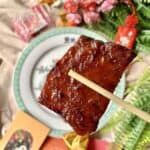
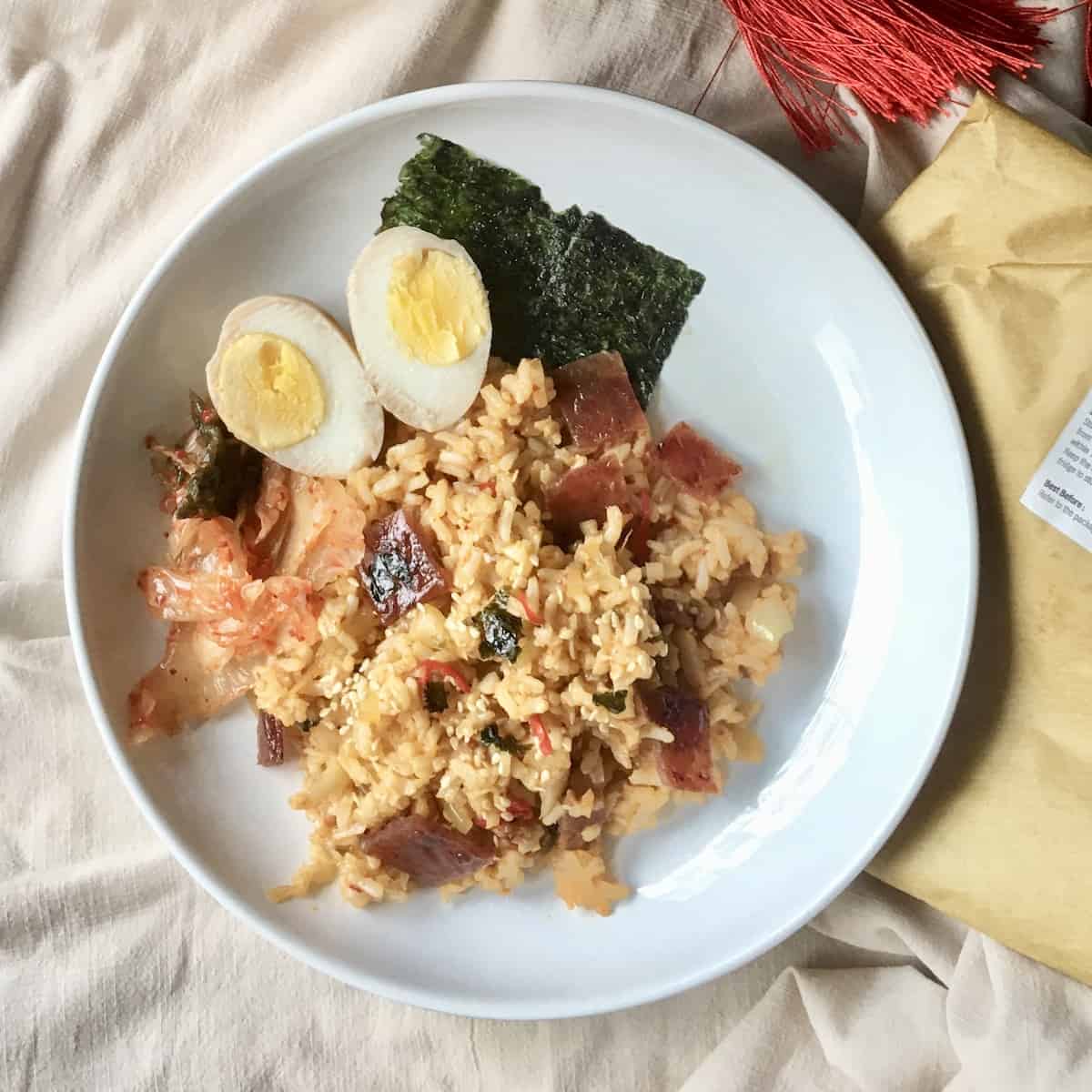
Soy Sauce Chicken
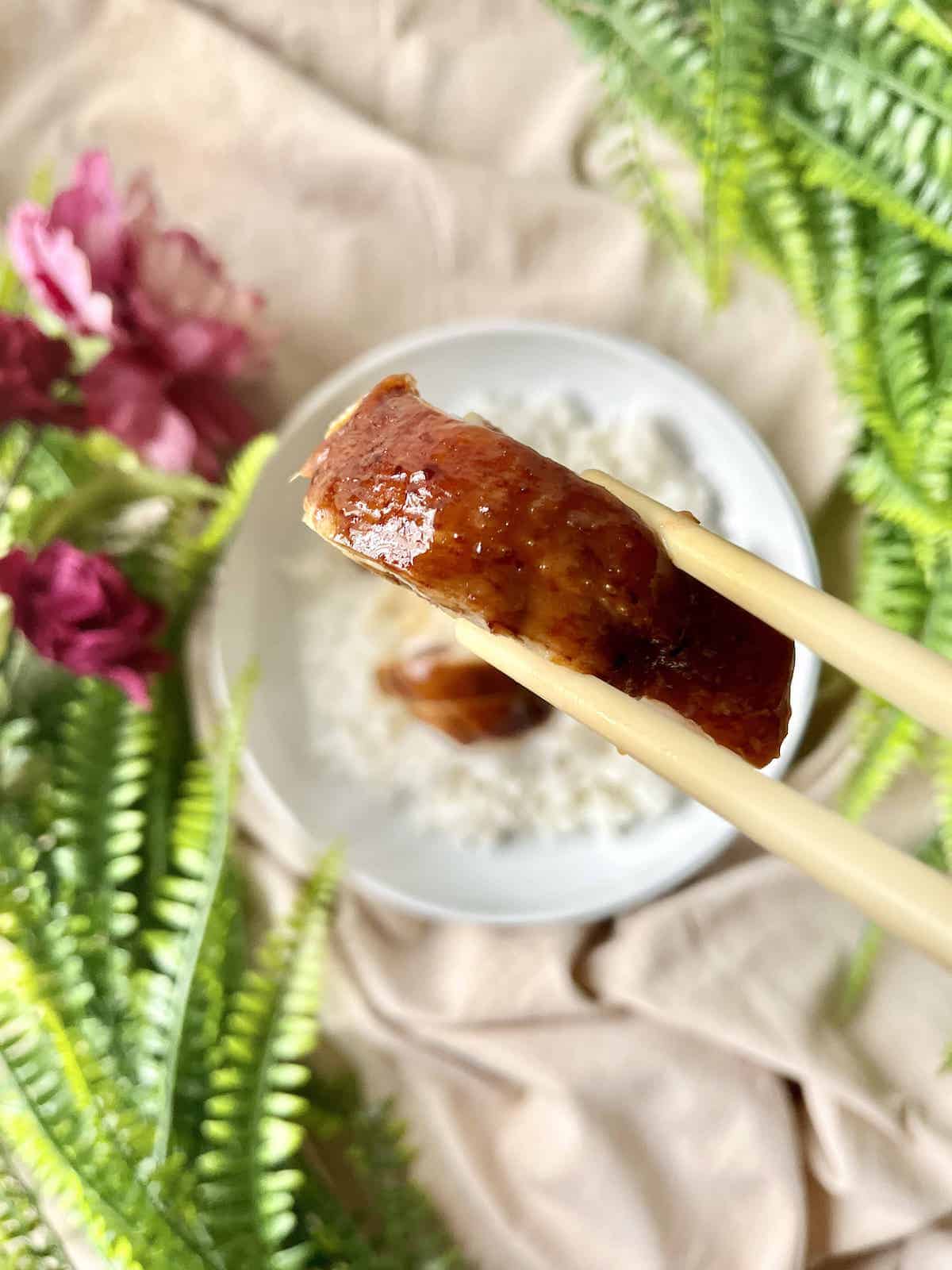
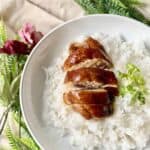
If you don't have the 2.5 hours that the above recipe calls for, try this easy and "quick" version (done in 50 minutes):

Braised Pork
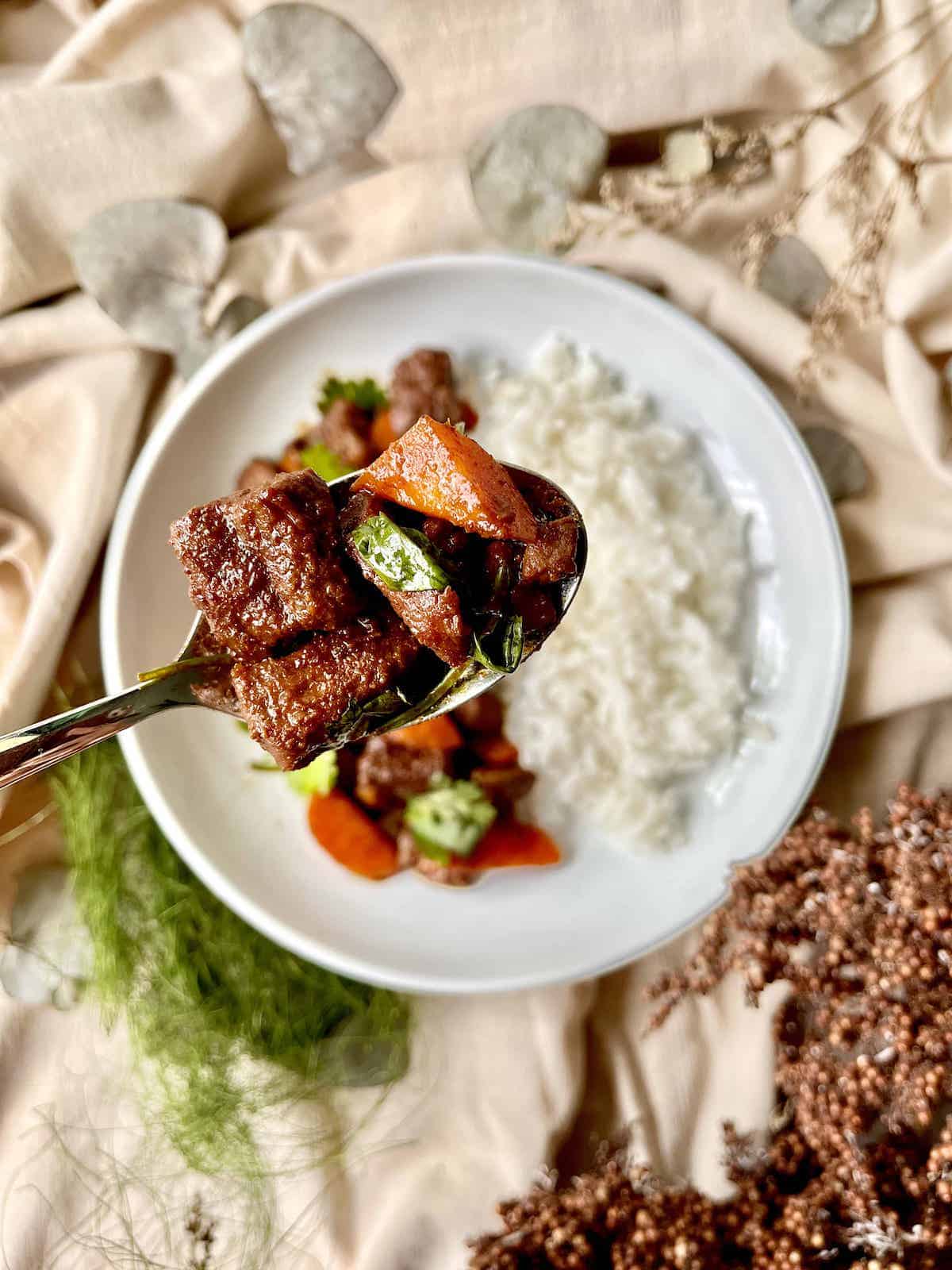
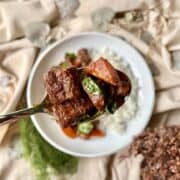
Spice Rub for Meat
The simplest way to use this wonder powder is to mix it with brown sugar and rub onto meat!
Char Siew

Baked Chicken
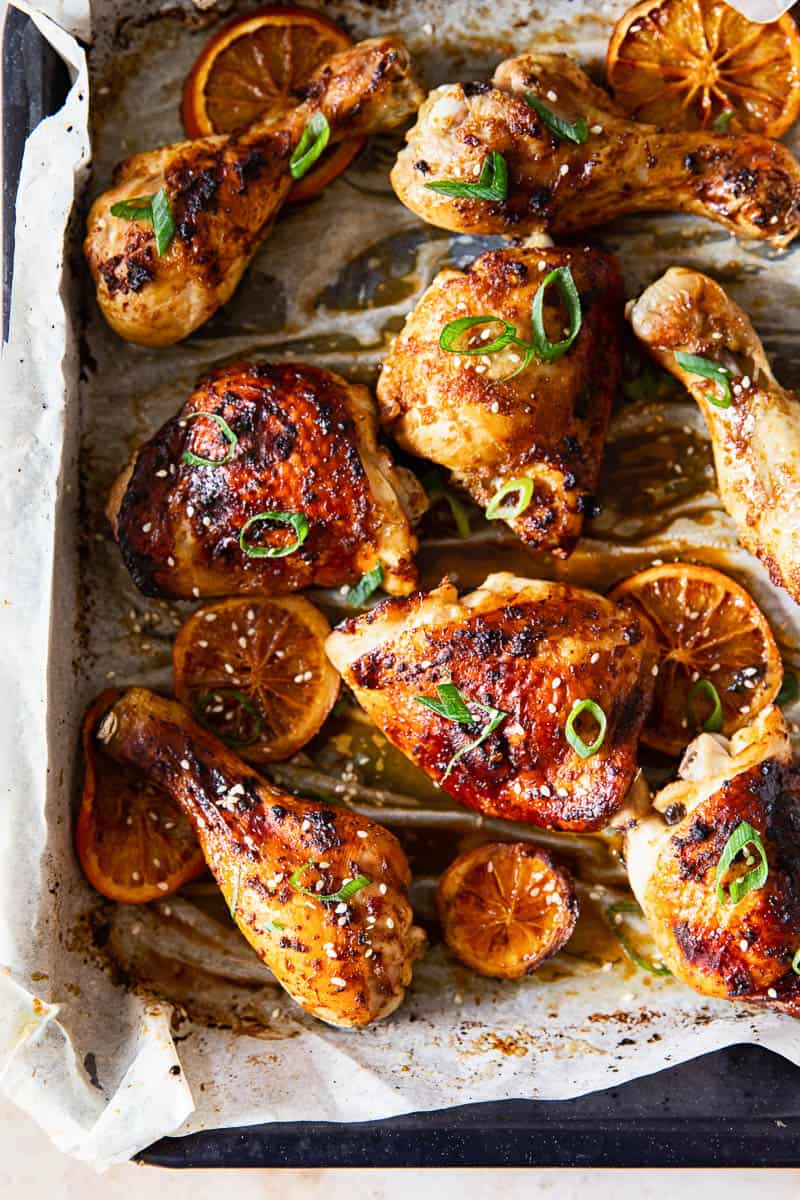

Popcorn Chicken
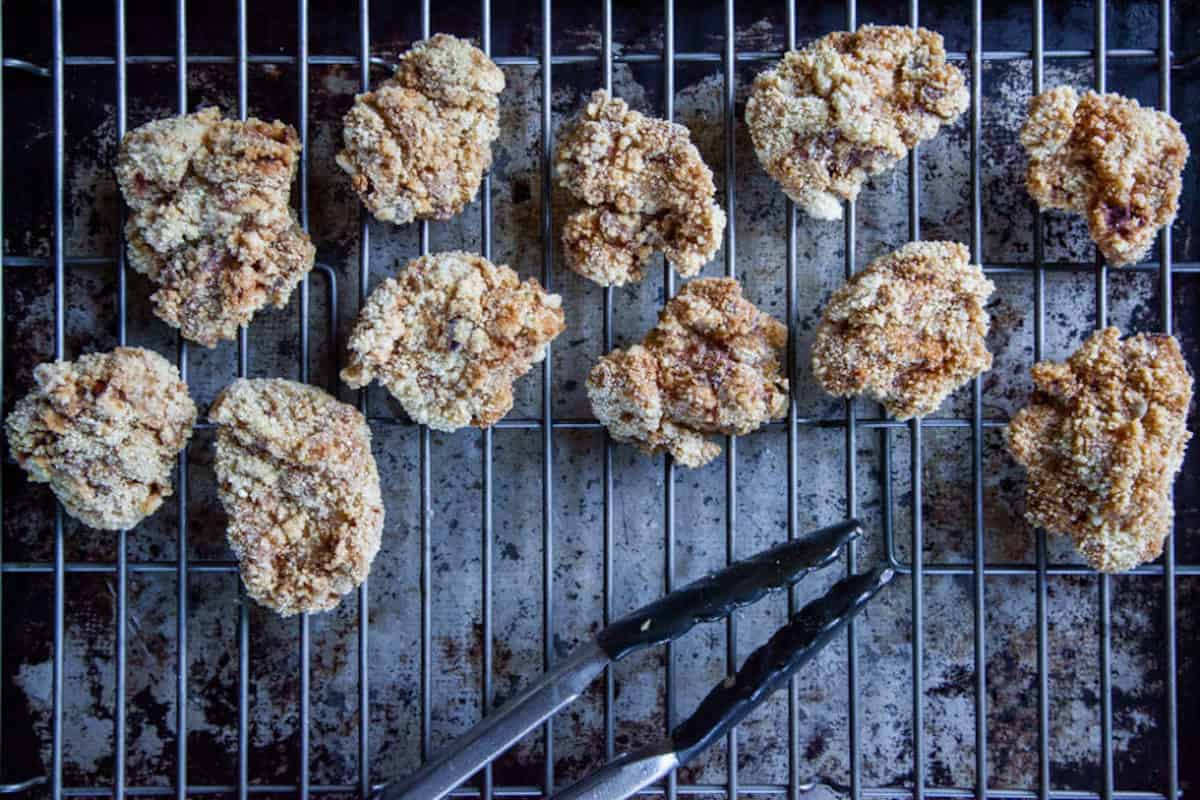
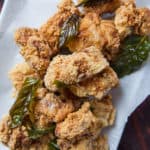
Seafood
Salmon Balls
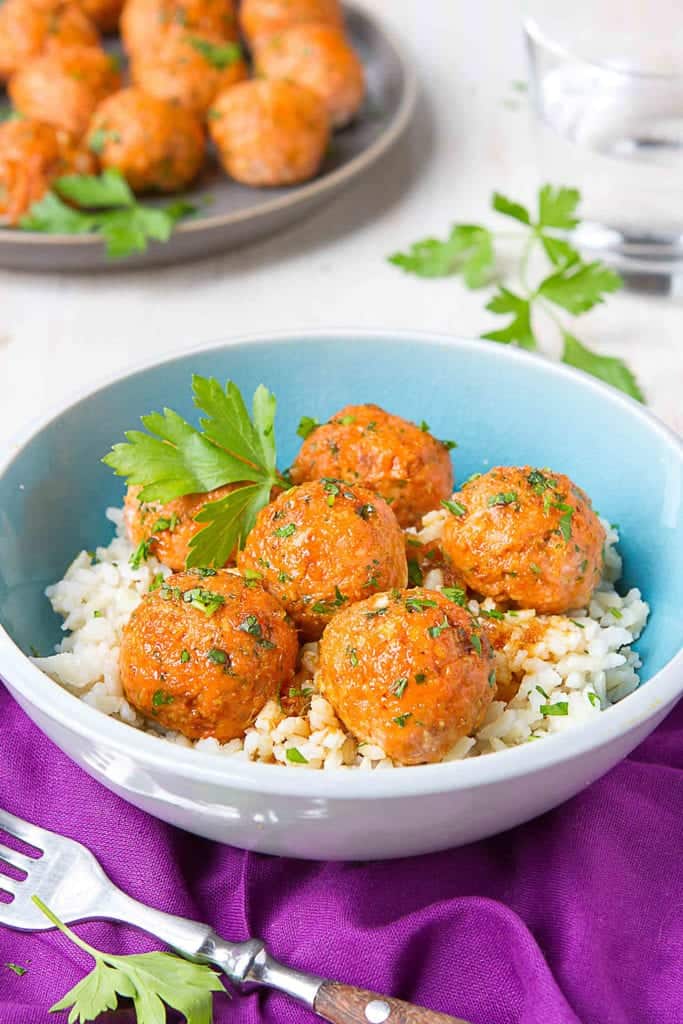

Savoury Snacks
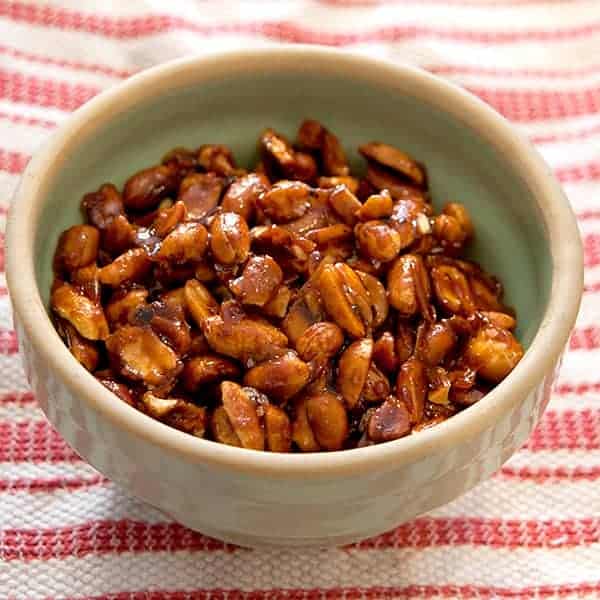
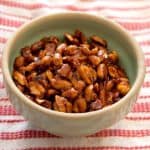
Asian Vegan Recipes
5 spice powder is most traditionally used with meat- especially pork- so I specifically decided to include a vegan section for this list!
Bao
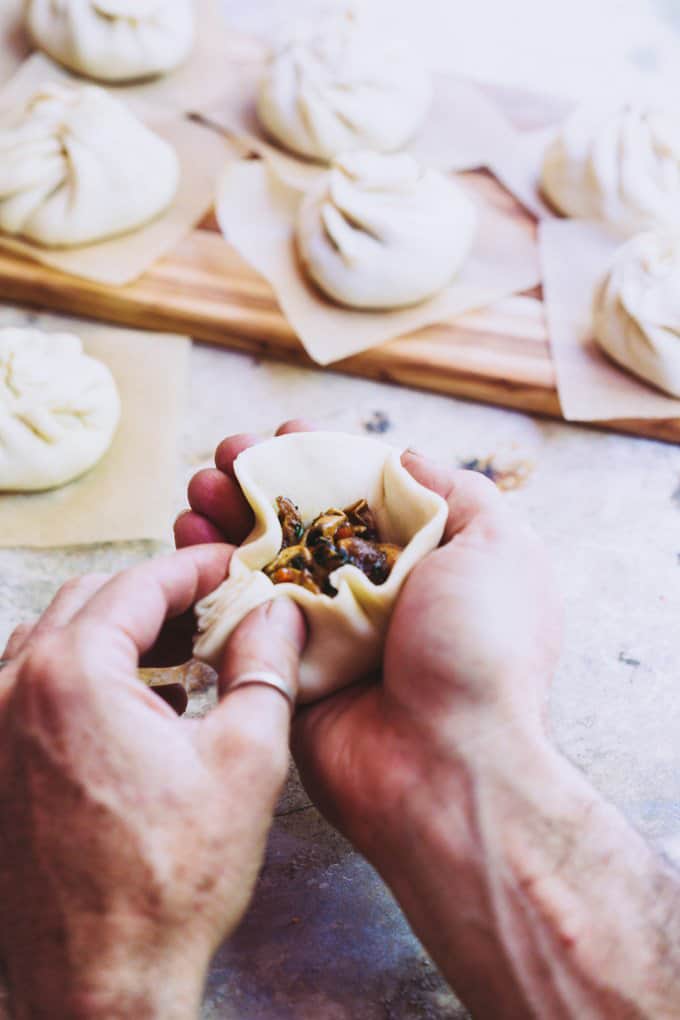

Dan Dan Mian
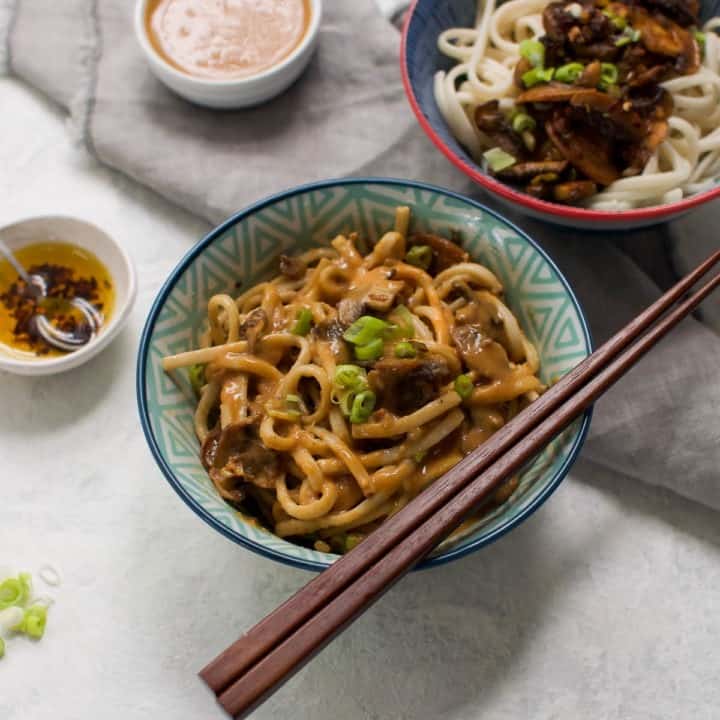
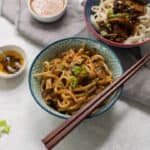
Sweet Foods
Definitely the most intriguing 5 spice powder recipes that I came across were the chocolate and 5 spice powder ones. I've only included 1- the chocolate rolls below- as it seems that you can just use the same 5 spice powder-chocolate proportions in your other dessert recipes and experiment from there!
Have you eaten any 5 spice powder desserts before?
PS If you're not a chocolate fan, Gary Jones (who works with Raymond Blanc) has kindly shared a mulled wine, fruits and ice cream recipe that uses 5 spice powder, courtesy of the Great British Chefs website.
I've also heard of people adding a pinch to their pumpkin pie- next Thanksgiving dessert, perhaps?
Chocolate Rolls
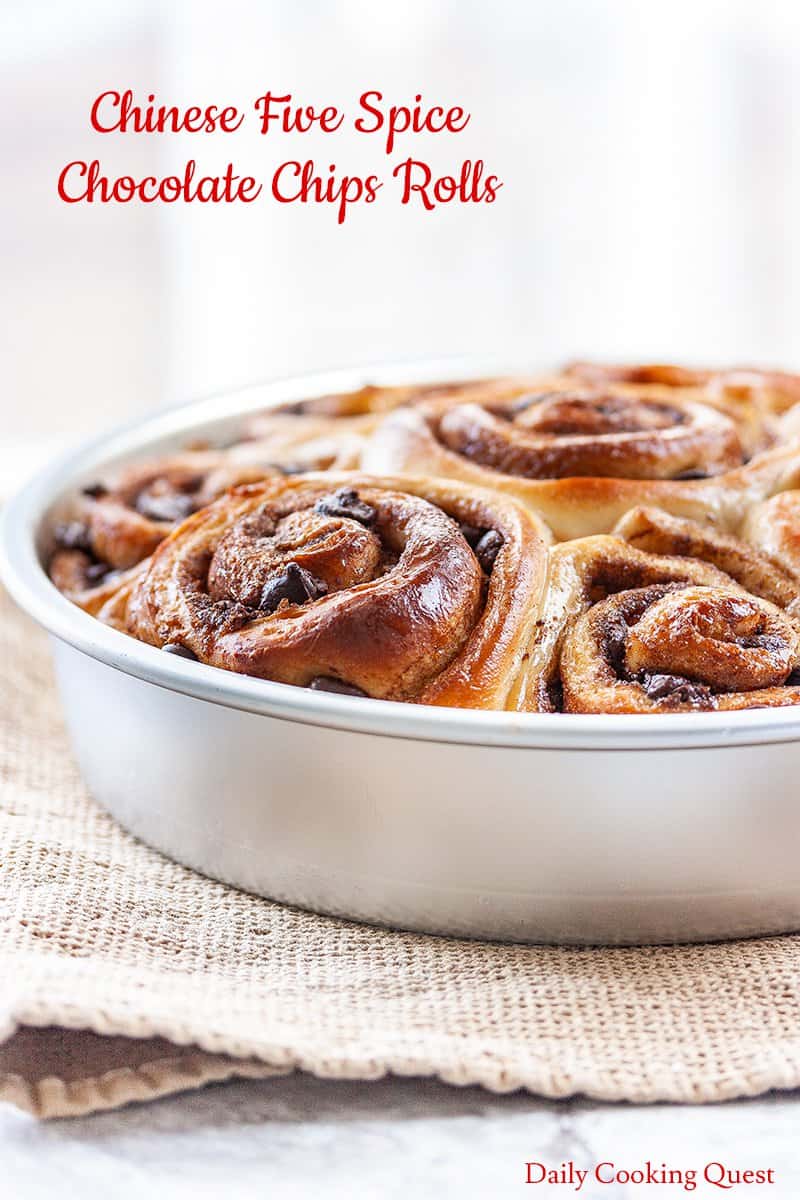

Banana Bread
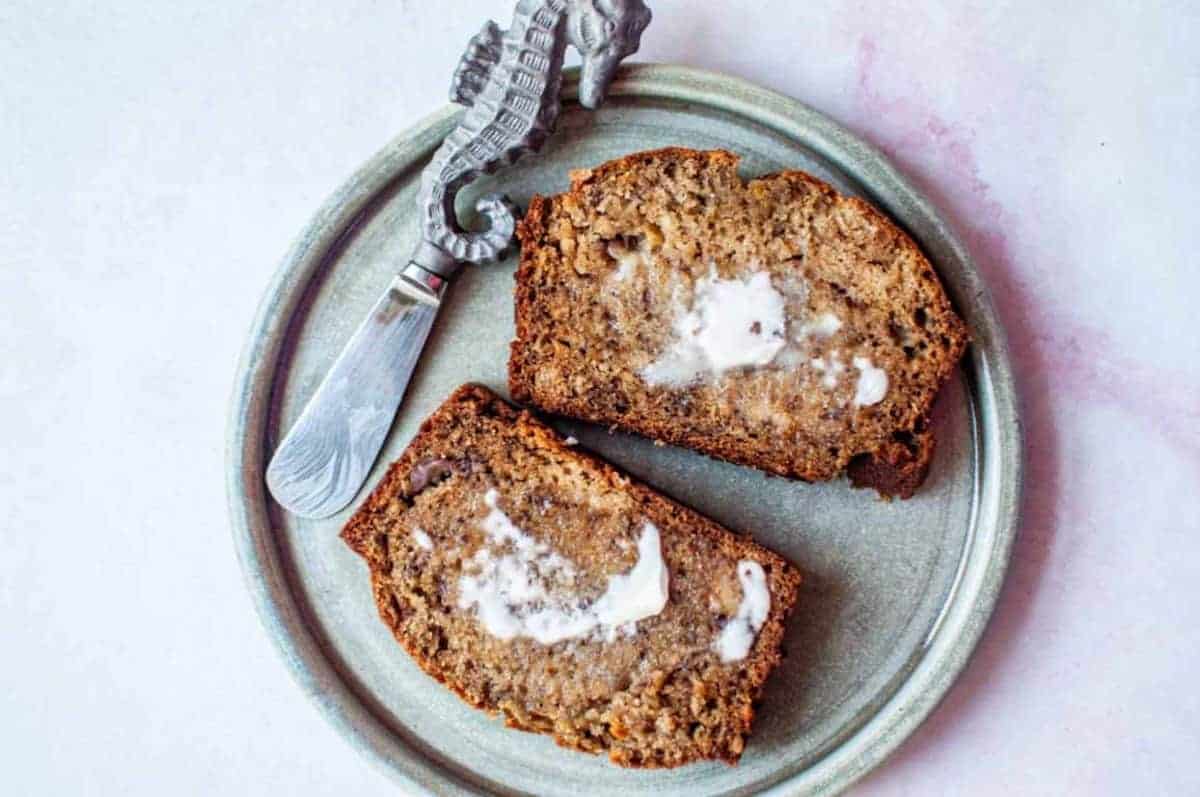

Expert Tips
Tip #1: Toast the whole spices in a dry skillet before blending them to release the essential oils & make the aromatic spice blend even more fragrant.
FAQ
Try substituting Chinese five spice powder with its constituent spices i.e. a pinch of ground cassia, ground star anise, ground cloves, ground black pepper, ground fennel, ground Sichuan peppercorns, ground dried tangerine orange peel, ground turmeric etc (Fun fact: 5 spice powder sometimes has more than 5 spices in it, hence the long list here!)
Like most spices, 5 spice powder doesn't expire or go bad so to speak if kept dry in an airtight container. (If stored improperly or if it gets wet etc, it may go moldy- in that case, toss and don't use!)
However, as time goes by, the powder will start losing flavour.
This happens quite quickly which is why I advocate keeping the whole spices instead. (They keep their fragrance for a longer time and, for best flavor, you can use a coffee grinder, spice grinder, or mortar and pestle to turn them into homemade 5-spice powder when you need it.)
Chinese 5 spice has a complex flavor- some say an almost pungent flavor- and unique aroma. A little goes a long way. Some people describe it as a lemony flavor meeting a licorice flavor. Since every recipe uses a different blend of ingredients, no 2 five-spice powders taste exactly the same.
Either way, these ground spices are a great addition to your spice cabinet. You can use it in dry rubs for seasoning meats (think Peking duck) or even to fry rice! (It goes particularly well with fatty meats.)
The most commonly used spices in a five-spice blend are available at most grocery stores today: fennel seeds (xiǎohuíxiāng 小茴香), star anise (bājiǎo 八角), cassia cinnamon sticks (ròuguì 肉桂, also known as Chinese cinnamon, and not to be confused with Ceylon cinnamon/ true cinnamon), Sichuan peppercorns/ Szechuan peppercorns (huājiāo 花椒), whole cloves (dīngxiāng 丁香. This expensive spice can be overpowering so a small amount is enough.)
However, the traditional spice blend can also contain:
ginger root, white pepper, sand ginger, nutmeg, turmeric, anise seed, cardamomum, tangerine peel (mandarin orange peel), galangal, licorice, and black peppercorns.
Note: don't use too much cassia in your cooking as it can be bad for you.
Which of these ways to use five-spice mix is your favourite?

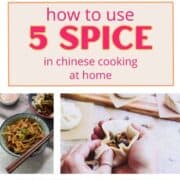
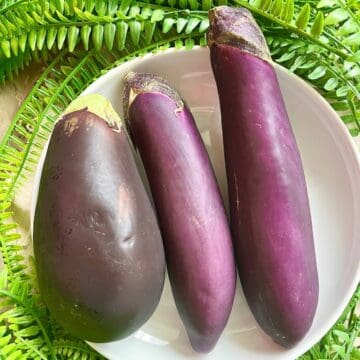
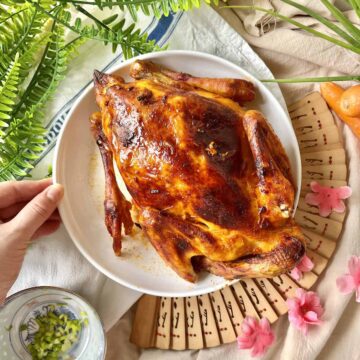
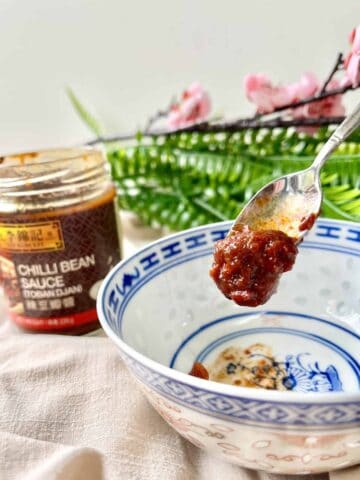
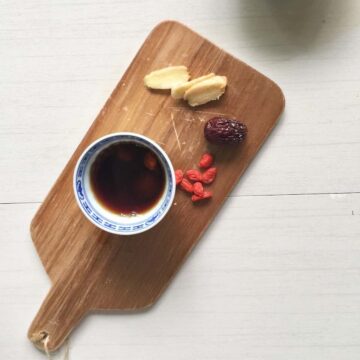
Peter Connolly says
These recipes sound delicious, I must try them. Thank you
Zen says
Thanks for stopping by Peter, hope you like what we make! We love the braised pork belly in my house!